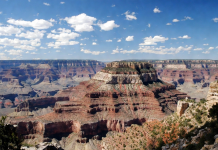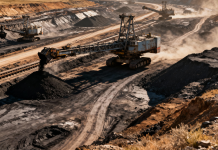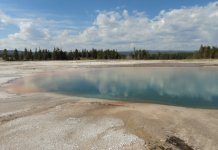A landslide in Greenland on September 16, 2023 triggered a significant seismic event due to the unique conditions of the local geography.
A massive piece of a mountain, approximately 3,937 feet high, collapsed into Dickson Fjord in eastern Greenland. This event was caused by the thinning of a glacier at the mountain’s base, which could no longer support the weight above due to melting ice.
The collapse led to a colossal rockslide, which in turn caused a mega-tsunami. The initial wave was estimated to be about 600 feet high. This wave was exceptionally large due to the volume of rock and ice that fell into the water.
The tsunami wave didn’t just dissipate; instead, it became trapped in the narrow and bendy Dickson Fjord. This led to a phenomenon known as a seiche, where the water sloshed back and forth like water in a bathtub. This sloshing continued for nine days, with the water moving every 90 seconds.
The continuous movement of this massive body of water within the fjord generated seismic waves that were detected globally. These waves caused the Earth to vibrate or ring for nine days, which was picked up by seismometers around the world.
Initially, this seismic signal was mysterious because it didn’t match typical earthquake patterns. An international team of scientists, along with help from the Danish military, used satellite imagery, field measurements, and advanced computer simulations to trace the signal back to this landslide-induced tsunami in Greenland.
This incident was unique due to the duration and nature of the seismic activity it caused, highlighting how interconnected Earth’s systems are with regard to unexpected geological events.
It’s pretty amazing how a landslide in Greenland could shake up the whole planet.
Note:
Greenland is a North American island autonomous territory of the Kingdom of Denmark. It is the larger of two autonomous territories within the Kingdom, the other being the Faroe Islands; the citizens of both territories are full citizens of Denmark.






